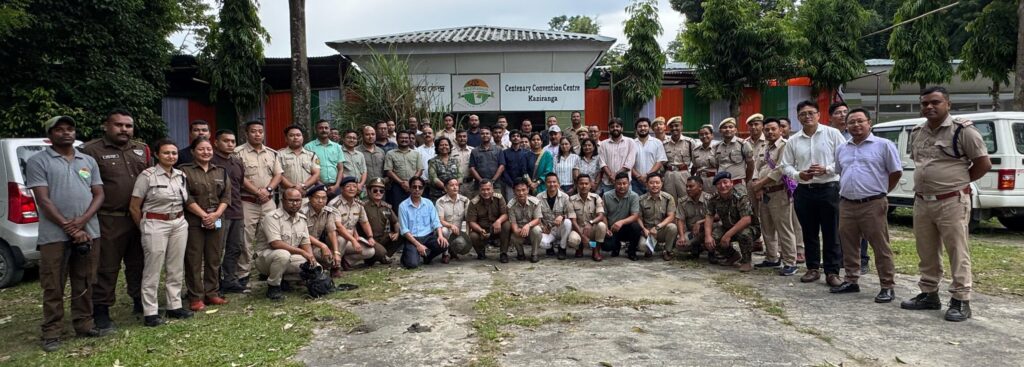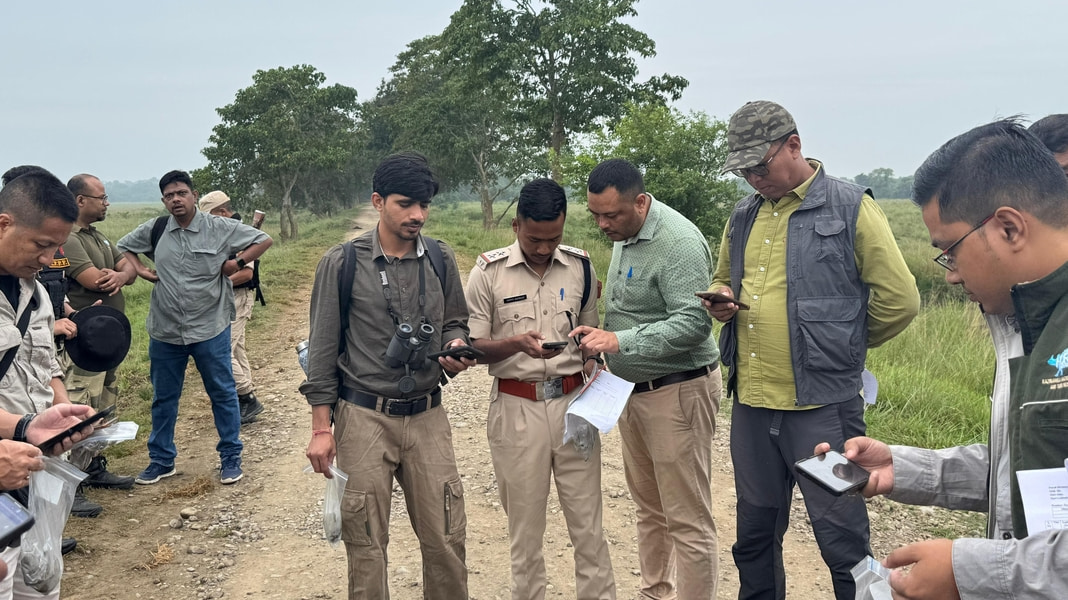Guwahati, Oct 26: Foresters in Northeast are now being trained to estimate elephant populations correctly with Spatially Explicit Capture-Recapture (SECR) being the latest one.
SECR is a scientific technique used for estimating wildlife population densities by combining capture-recapture data with spatial information. Unlike traditional methods, which might only count individual encounters, SECR focuses on the locations where these encounters occur, making it highly effective in dense or rugged habitats, such as forests where visibility is limited.
Experts say the SECR method is widely regarded for its accuracy and adaptability, especially useful in large landscapes where physical counts are impractical.
A two-day Training of Trainers (ToT) program was organised at Kaziranga National Park & Tiger Reserve (KNP & TR) in Assam for the effective conduct of the elephant population census.

KNPTR Director Sonali Ghosh said that in the two-day (October 23-24) training, held at the national park, 70 frontline forest personnel from 28 forest divisions from Assam, Arunachal Pradesh, Manipur and Nagaland
She said that the Project Elephant under the aegis of the MoEFCC has been conducting the “Synchronised Elephant Population Estimation” across all elephant-bearing states of India every five years.
For the 2023-24 estimation, the methodology will be based on covariate-based Spatially Explicit Capture-Recapture (SECR) modeling, using DNA from dung samples to individually identify elephants. This approach mirrors the methodology successfully employed in the national-level tiger and leopard estimations, ensuring a robust, scientific basis for accurate population estimates
The current cycle is for the year 2023-24.

The trainees were familiarized with MSTrIPESpolygon applicationthatallows the user to record geo-referenced field observations and seamless data archiving to ensure minimal error in sampling
KNPTR Director said that as part of this initiative, Training of Trainers (ToT) was focused on key aspects such as sampling elephant encounter rates, determining group composition, and collecting dung samples for faecal DNA analysis.
According to 2017 census, the country had 29,964 elephants.
Read: Comilla Cotton’s Eco-Friendly Makeover: Innovations Pave the Way for Sustainable Products
WATCH:
Find latest news from every corner of Northeast India at hubnetwork.in, your online source for breaking news, video coverage.
Also, Follow us on-
Twitter-twitter.com/nemediahub
Youtube channel- www.youtube.com/@NortheastMediaHub2020
Instagram- www.instagram.com/ne_media_hub
Download our app from playstore – Northeast Media Hub



